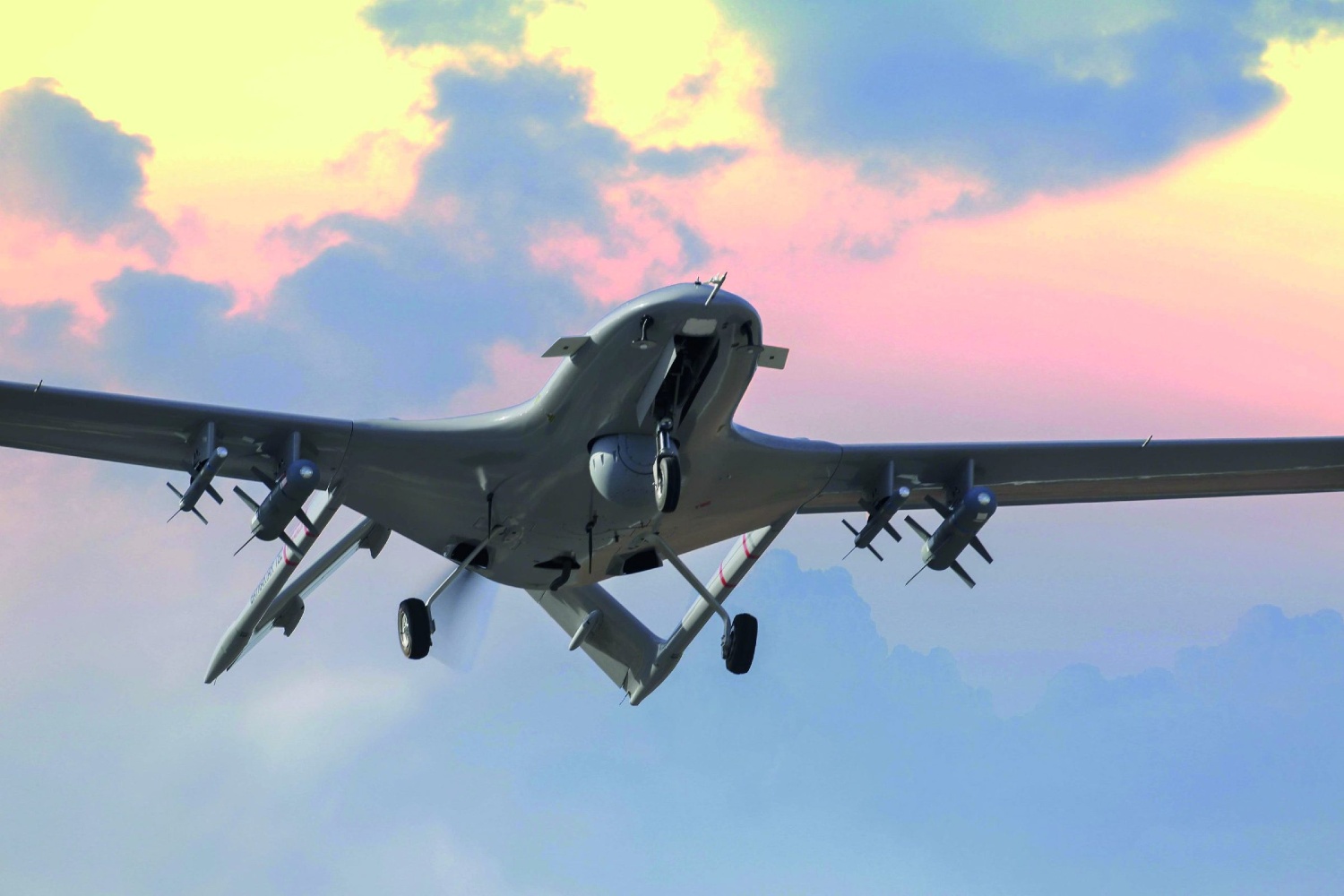Turkey’s leading aerospace firm and drone maker, Baykar, has revealed plans for a satellite constellation that will be launched by 2025; ‘space tugs’ that can move around other satellites and has hinted at an advanced version of the Kizilelma unmanned combat aerial vehicle (UCAV).
A space program accords the last attribute Turkey needs to be recognized as a significant aerospace and defense power that has launched a variety of indigenously developed land, air, and naval platforms.
The latest revelations were made by Baykar Technologies’ Chief Technology Officer (CTO) Selçuk Bayraktar at the Take Off Entrepreneurship Summit in Istanbul, held under the aegis of the Turkish Ministry of Industry and Technology.
The world-famous drone engineer, also a household name in Turkey, laid out the company’s vision amid a new defense technological landscape thrown up by current wars.
The country has launched a series of UAVs like the TB-2 Bayraktar used in the Ukraine war; its subsequent TB-3 version; the Akinci UCAV; the Kizilelma UCAV that is envisaged as a loyal wingman; the Turkish Aerospace Industries (TAI) Anka-3 UAV; the TAI-FX fifth-generation fighter; the single-engine, tandem-seat supersonic TAI Hürjet advanced jet trainer; and the TGC Anadolu amphibious assault ship intended to be used as a UCAV carrier.
This includes other tactical land platforms, anti-air, land, and sea missile systems, and smaller defense electronics and accessories from other defense majors like Aselsan, Roketsan, TUBITAK-Sage, and Otokar.
Turkey’s Maiden Space Program
“We are foreseeing the future and preparing for the race of that future from today,” Bayraktar said. He also pointed to the country reducing its defense import dependency by “85 percent” from 18 years ago, owing to a decades-long effort by its government and private industry.
Bayraktar then touched upon Low Earth Orbit (LEO) satellites and, without directly mentioning their military use, said they are “not going where the world is going.” “The world is deploying Starlink at 500-600 kilometers. They are launching thousands of satellites. We’re going a bit further. Our principle is not to go where everyone else is going but to be somewhat different. You can see this in the designs of our UAVs,” Bayraktar said.
He revealed Ankara’s interest in ‘space tugs’ (or Orbit Transfer Vehicles), which can relocate and shift satellites from various orbits and distances as needed. Whether Turkey wants to develop this capability for its future satellites or offer it commercially to other countries’ spacecraft is unknown. However, given the high participation of the Turkish defense sector in the international arms market, the possibility of Baykar desiring to carve a niche for itself in orbital logistics cannot be denied.
“Hopefully, by 2025, we will have sent our first satellite into space. As a private company, we will have designed this satellite and worked on global navigation systems and specialized communication applications. Again, we are working on orbit transfer vehicles in space technologies in this field,” Bayraktar said.
Drone Power Plus Space Capabilities
Much information about the Turkish satellites is still unknown – whether they would avail commercial launch services from other countries’ private companies or develop their launch vehicles. But it is the overlap between the future satellite program and Turkish UAVs that Bayraktar does not suggest but would undoubtedly benefit its drones that are fascinating.
Bayraktar said that regarding satellites, the Turkish “principle is not to go where everyone else is going (which) can be seen in the designs of our UAVs.” Having satellites is generally a highly beneficial capability for military purposes. But for an emerging drone power, all the more, since it accords the unmanned systems more excellent range and control options.

This will not be lost on Turkish planners. They will have envisioned integrating their drone fleet with space cover. These were once some of the early spacecraft that demonstrated reliable capability in imaging, reconnaissance, tracking, communications, and positioning-navigation/satellite navigation (PNT/SATNAV).
He did say the first satellite’s purpose is for “global navigation systems and specialized communication applications.” This statement implies the “specialized” nature of the first satellites’ navigation and communication services must have a significant military orientation.
The operationalization of the Kizilelma UCAV and its subsequent serial production variants may align with the larger satellite constellation coming online. These can provide the drones with more accurate targeting information and redundancy in remote control while also providing targeting data to its beyond visual range (BVR) Gokdogan missile or its short-range Tayfun ballistic missile.
- The author can be reached at satamp@gmail.com
- Follow EurAsian Times on Google News




